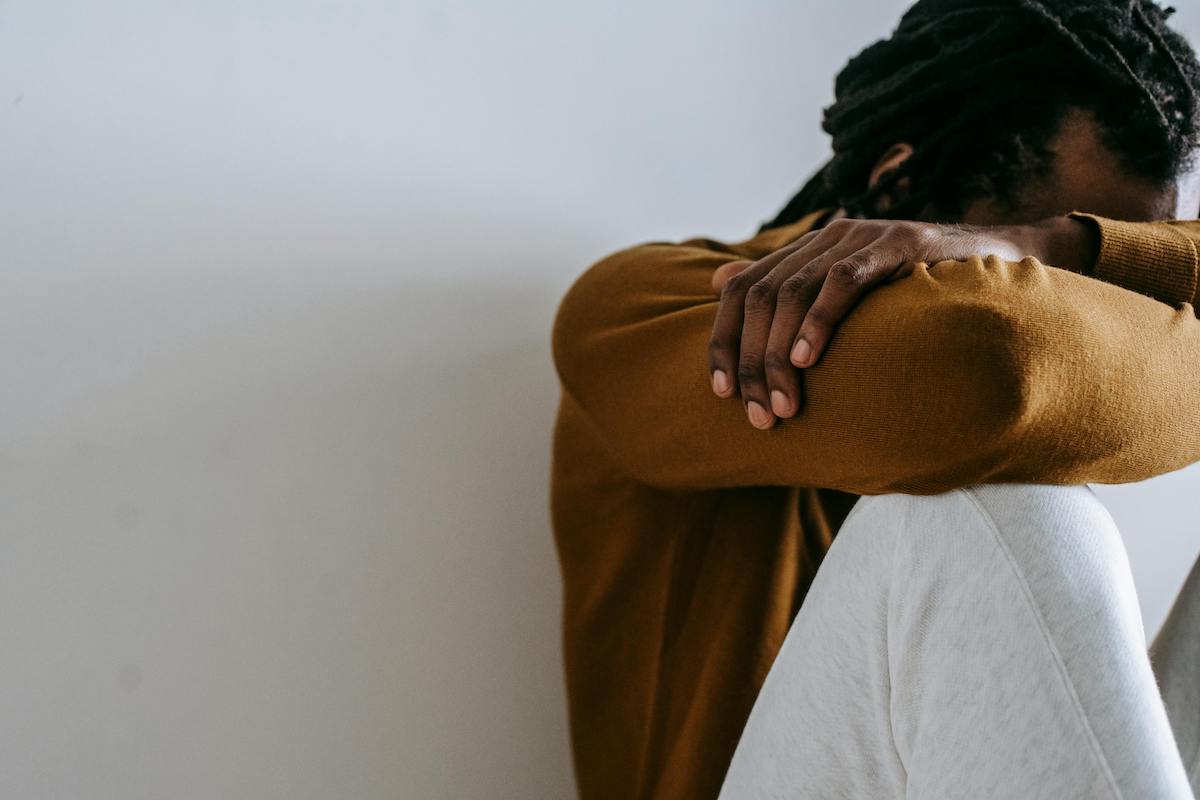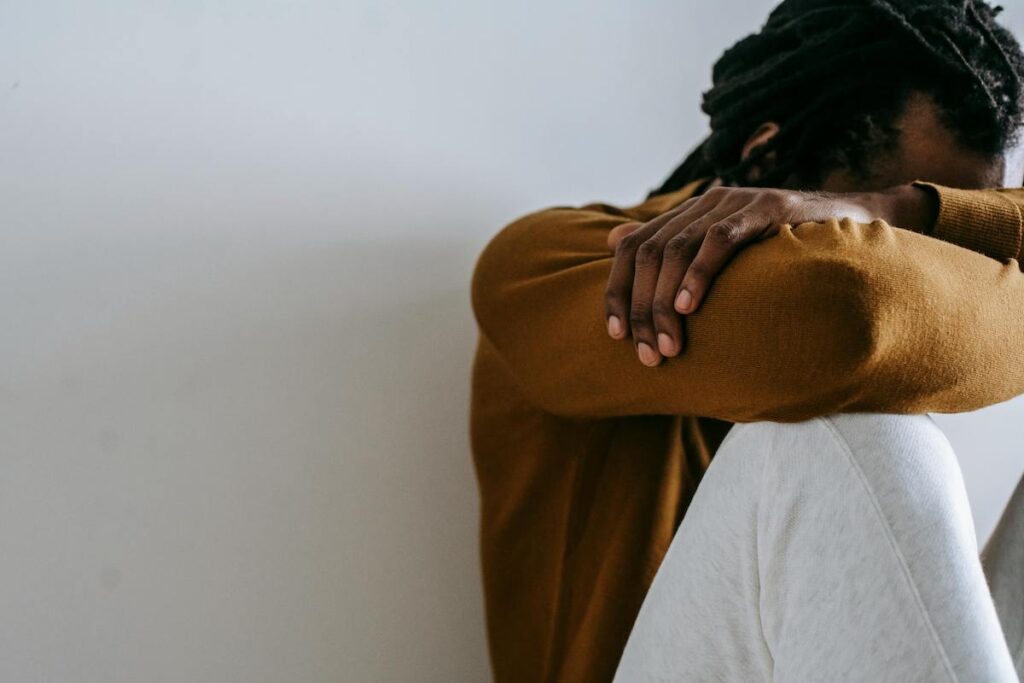
 According to the CDC the suicide rates among Black youth aged 10-24 years increased by over 36% between 2018 to 2021
According to the CDC the suicide rates among Black youth aged 10-24 years increased by over 36% between 2018 to 2021By Aaron Allen, The Seattle Medium
Imagine a young, promising middle or high school student. On paper, their credentials are impeccable, preparing them for a bright future. However, beneath the surface, they struggle with severe self-esteem issues, traumas, and a lack of confidence. This contradiction is not uncommon, as mental health and well-being are complex and often difficult to fully understand. It’s a silent battle many are fighting without our knowledge, as we often cannot assume everything is fine based solely on outward appearances.
Tragically, this scenario is increasingly becoming more common among Black teens across the nation, who are experiencing the highest rates of suicide among their peers. In response, King County and various public health organizations are intensifying efforts to provide essential resources for these young people, focusing on the mental battles they face.
#James Donaldson notes:
Welcome to the “next chapter” of my life… being a voice and an advocate for #mentalhealthawarenessandsuicideprevention, especially pertaining to our younger generation of students and student-athletes.
Getting men to speak up and reach out for help and assistance is one of my passions. Us men need to not suffer in silence or drown our sorrows in alcohol, hang out at bars and strip joints, or get involved with drug use.
Having gone through a recent bout of #depression and #suicidalthoughts myself, I realize now, that I can make a huge difference in the lives of so many by sharing my story, and by sharing various resources I come across as I work in this space. #http://bit.ly/JamesMentalHealthArticle
Find out more about the work I do on my 501c3 non-profit foundation
website www.yourgiftoflife.org Order your copy of James Donaldson's latest book,
#CelebratingYourGiftofLife: From The Verge of Suicide to a Life of Purpose and Joy

www.celebratingyourgiftoflife.com
Link for 40 Habits Signup
bit.ly/40HabitsofMentalHealth
If you'd like to follow and receive my daily blog in to your inbox, just click on it with Follow It. Here's the link https://follow.it/james-donaldson-s-standing-above-the-crowd-s-blog-a-view-from-above-on-things-that-make-the-world-go-round?action=followPub
“I would love to see more resources but we do know that among young Black people there are so many things that can increase the risk of suicide,” says Makayla Wright, Program Manager for the Community Wellbeing Project/Program for King County. “So many things like a good sense of belonging or connection to their peers, or trusted adults, working with county we are trying to address some of these things that can get young people triggered or thinking about suicide, especially Black young people.”
The statistics are alarming. The Association of American Medical Colleges (AAMC) reports a staggering 78 percent increase in suicide rates among Black youth aged 10-19 from 2000 to 2020. This rate is approximately twice that of their white counterparts. Confirming this trend, CDC data shows a significant increase in suicide rates among Black persons aged 10-24 years, from 8.2 to 11.2, a 36.6% rise from 2018 to 2021.
These increases highlight a broader issue of disparities in youth suicide rates. Factors contributing to suicide are varied and complex, including relationship issues, academic or job stress, financial problems, substance use, historical trauma, barriers to healthcare access, social isolation, mental illness, and even the impacts of disasters such as the COVID-19 pandemic. This pandemic has underscored the need for vigilance in prevention efforts, especially among disproportionately affected populations.
Research indicates that suicide is preventable through a comprehensive public health approach that relies on data to drive decision-making, partnerships to expand outreach, and implementation and evaluation of multiple culturally relevant prevention strategies.
A significant factor in youth suicide is adverse childhood experiences (ACEs), such as domestic violence, loss of a parent, or financial hardship. Unfortunately, children of color, particularly Black children, are disproportionately affected by ACEs. Wright highlights the need to destigmatize conversations around these issues.
“From my professional perspective it is important that we need to destigmatize these types of conversations and be open and honest about some of things that we are seeing,” says Wright. “Of course, if you are seeing your young person starting to withdrawal, or if things are shifting, they are not hanging out with their friends, or they are more isolated, those can definitely be things to look out for.”
“I also would say it could be helpful for parents to look into research and information for example there is a real good study that was done, The Adverse Childhood Experience Study, that talks about different adverse childhood experiences that young people can experience that can contribute to their mental health outcomes as well as their physical health and behavioral issues,” added Wright.
Black children face additional burdens of racism and discrimination, which have also been linked to increased suicide risks. Black youth are more likely to experience suicidal thoughts, make suicide plans, and attempt suicide than those who do not.”
According to AAMC, “Youth of color also bear the tremendous burdens of racial discrimination which is associated with suicidal behaviors. Studies suggest that feeling discriminated against can occur as young as six years of age for Black youth, and Black adolescents who perceive racial discrimination are more than three times more likely to experience suicidal thoughts, make suicide plans, and attempt suicide than those who do not.”
“A big part of it is stress and toxic stress, disconnection and not feeling supported and we know that for an individual who has an identity that has historically been marginalized that is definitely something that can be stressful especially for a young person trying to figure out their identity and trying to make sense of it,” says Wright.
“Also, for a Black youth or Black teens, looking at the data and knowing what we know historically about discrimination and other things, I would say that that can definitely be a contributing factor.”
“I think it is really important for us just as supporters, even with the example that a young person could be doing well looking from the outside yet, there might be a lot things happen internally, so even being able to be aware of the source of stress for a young person and asking what is contributing to that anxiety or stress in that young person, how can I help them?” adds Wright.
In addressing this issue, King County offers various mental health resources. During the school year, students in 8th, 10th, and 12th grades take ‘The Healthy Youth Survey,’ which includes questions about mental health. Moreover, King County and public school districts in the area have implemented school-based health centers, providing counselors and therapists to assist students.
The CDC’s Suicide Prevention Resource for Action further supports state and community interventions based on the best available evidence to save lives. Additionally, the U.S. Substance Abuse and Mental Health Services Administration’s 988 Suicide & Crisis Lifeline offers immediate help for persons in crisis.

https://standingabovethecrowd.com/james-donaldson-on-mental-health-a-silent-battle-many-black-youth-struggle-with-suicide/


No comments:
Post a Comment